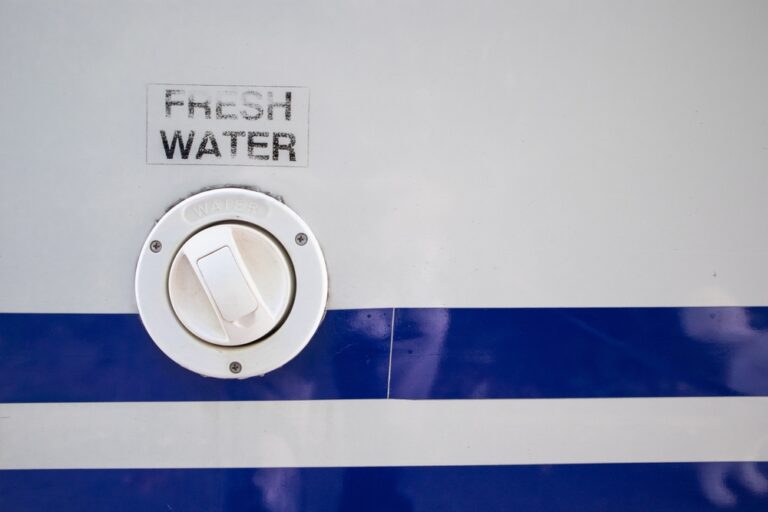
“Just don’t drink the water.” How “fresh” is your fresh water?
With multiple water sources and the dust from traveling, it is difficult to know how pure the H2O, that comes from the kitchen faucet of your RV, really is. Some campgrounds provide well water, and others use municipal sources. Depending on how long you let the water sit in the tank, you may be incubating a whole colony of bacteria, as well. Realistically, it is a good idea to periodically sanitize your fresh water tank. An ounce of prevention is also a good measure, to avoid making you or your family sick, from the harmful bacteria in your RV’s water tank.
Preventing RV Water Contamination
By developing a few preventive habits, you significantly reduce the amount of bacteria you ingest. Consider adding these tips to your routine, and avoid contaminating your fresh water supply.
• Find out where the water comes from. Ask the campground host or manager whether it is municipal water or well water. Well water should be regularly tested for safety.
• Install water filters: one at the source and one at the kitchen faucet.
• If you aren’t sure about the water’s safety, boil it before drinking. Another option is to keep bottled water on hand.
• Wash your hands before touching your fresh water hose, and make sure to keep it off the ground.
• Wash your hands after using the dump station or hooking up to the waste drain. Only use water from the dump station to fill your tank if it is guaranteed consumable.
• Sanitize your tank before storing your RV.
These measures prevent harmful bacteria from spreading throughout your water tank. It isn’t difficult to keep your fresh water tank clean and sterile. This helps to make sure that your family doesn’t get sick from ingesting contaminated water.

Sanitizing the RV Fresh Water Tank Step-by-Step
Although it takes about half a day to get the tank sanitized, the actual work takes less than an hour. The job is really quite easy. Since you’ll be using the pump for this chore, you need to plug into an electric hook-up or have your batteries charged. Turn off the water heater, and remove all the anti-freeze from the pipes. Then, open the drain valve to your gray water tank. Make sure to notice the levels, to avoid overflow.
1. Turn your water pump off. Then, open the fresh water tank valve, and drain all the stored water from the tank.
2. Mix a cup of tank cleaner or bleach with a gallon of water. Use a funnel to pour this into the empty fresh water tank.
3. Put the fresh water tank valve back, and turn the water pump on. Fill the water tank with fresh water.
4. When it’s full, turn on the water outlets and faucets, even the shower. Let the water run freely. Make sure that the gray water tank drain valve is open, and pay close attention to the water levels.
5. When the bleach smell becomes really strong, turn the water outlets off.
6. Then, fill the water tank with cold water. Let it sit for approximately 8 to 12 hours.
7. Afterward, turn all the faucets and water outlets on again. Let the water run through, until you no longer smell bleach. Fill the fresh water tank and keep flushing it out until the bleach has been completely removed.
8. Empty the tank if you’re going to store your RV. Refill it with clean water, if you’re still using it.
It is a good idea to sanitize the fresh water tank of an RV at least twice a year, or once every six months. If you are frequently on the road, however, it is better to do this once a month.
In Conclusion
Traveling the country in a motorhome is a great adventure. Getting sick from contaminated water is one aspect that you don’t have to suffer through. With a few good habits and a schedule that includes routine sanitation, you won’t be incapacitated on your journey. Although these tips are common sense, they are often overlooked. Please share this with any friends and family members who live in, or travel in, their home-on-wheels. It may actually save their lives.
Thanks for reading and don’t forget to comment below!






